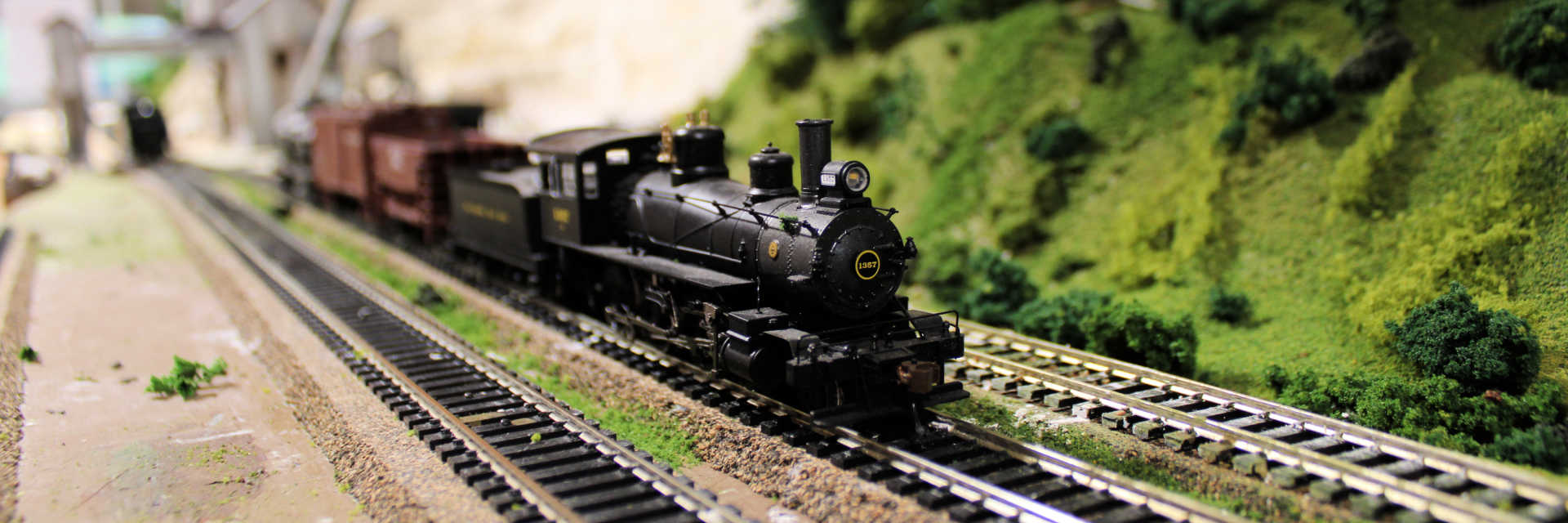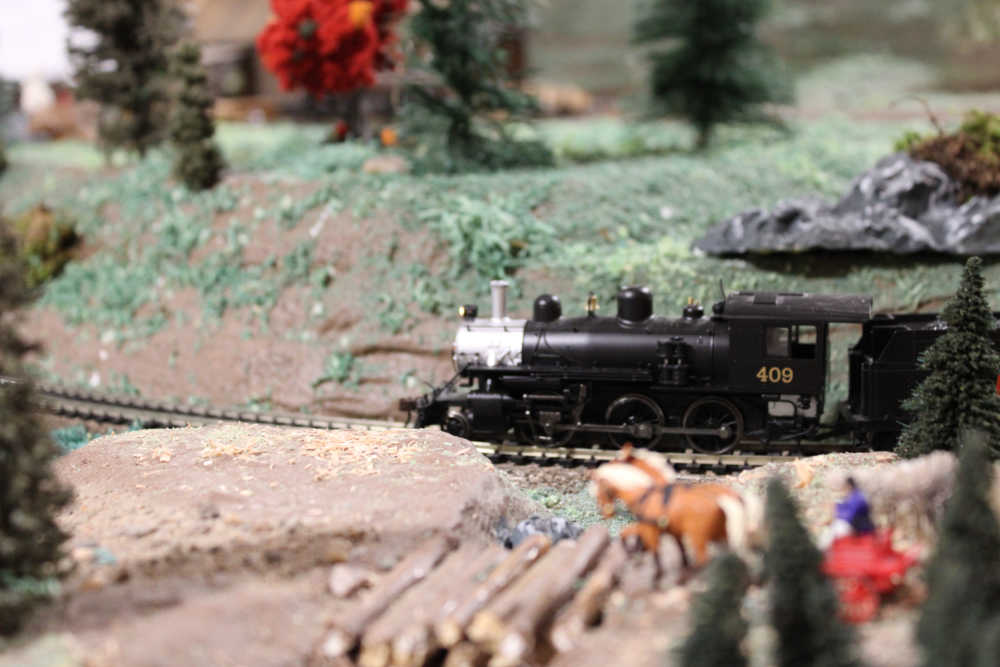
Middleton Railway Museum HO Scale Layout
The Middleton Railway Museum layout depicts the Annapolis Valley from Windsor to Annapolis Royal. It has several purposes: to show how the Dominion Atlantic Railway influenced the economic and social development of the valley, to represent the history of the Dominion Atlantic, and to recreate accurate scenes which may no longer exist since the railway’s closure.
The layout is in HO scale, 1:87. This is the most common scale used in model railroading, but other scales exist. HO scale was chosen for its combination of small size with clear details, availability of quality models, and relative affordability.
The MRM layout is in Proto-Freelance style. That is, key towns and historic sites are modeled as faithfully as possible while the sections between show various scenes of typical Nova Scotia life and industry, but not of specific locations. The layout also covers a very broad timeline; different scenes may take place in different times, depending on the type of activity.

Photo by Lee Hopkins
After some months of clearing and preparing the freight shed, construction of the layout began in the early Spring of 2020. Basic wooden benchwork is overlaid with plywood, and then rigid foam insulation. Landforms are created from layers of foam, plaster, wood and papier mache, all sculpted by hand. Buildings are primarily hand crafted from wood using archive photos and historical drawings for reference.
Control of the trains is by a Digitrax Digital Command Control system run from a central computer. The layout is divided into 8 power districts and 40 detection zones for future autonomous running. Over 50 switches are also controlled by computer using custom-built control boards with Arduino microprocessors. The total length of track is nearly 350 feet, which in HO scale represents a real distance of over 9 kilometres.
Trains can also be controlled by individual operators using cell phones connected to our secure wireless network.
CAB Rides
Check out the progress on our layout from the cab of one of our locomotives in the videos below:
Header Photo by Lee Hopkins

